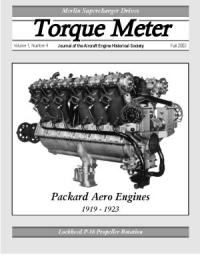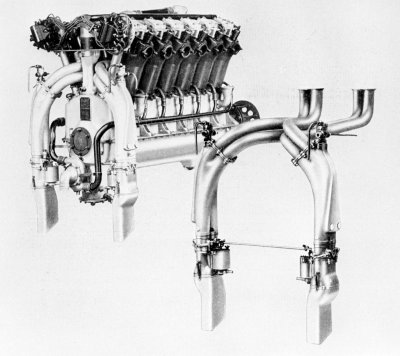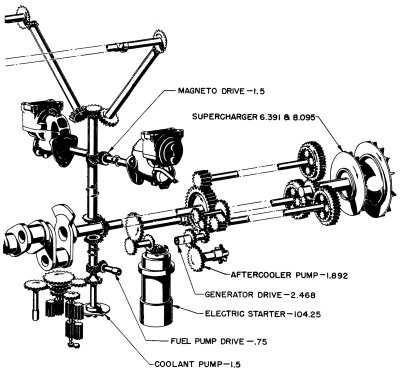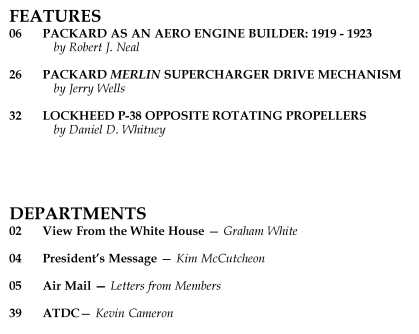
Torque Meter
Fall 2002 Issue
 |
 |
Packard Aero Engines: 1919 - 1923 Packard’s interest in aircraft engines began in the fall of 1914, directly following the outbreak of war in Europe. Henry Joy was then President of Packard and it was he who said "Just as sure as God made little green apples. We will some day be forced to participate in this war." Joy was impressed with the importance of the airplane in modern warfare and, looking about, realized how poorly prepared the United States was to produce, as he put it, "an automotive power plant for aerial warfare." He then authorized Jesse G. Vincent, Packard’s Vice President of Engineering and chief engine designer, to put together a qualified engineering organization that could design and develop a first-class aircraft engine. In this issue of Torque Meter, Packard expert Robert J. Neal tells the story of Jesse Vincent and the evolution of Packard aero engines from 1919 through 1923. Included is an intriguing account of the Navy airship Shenandoah. |
 |
The Packard Merlin Supercharger Drive Mechanism When Packard began producing two-stage Merlin aircraft engines, the original Rolls-Royce supercharger drive design was changed to what proved to be a better scheme. The Packard designed supercharger drive for the two stage Merlin engines is often described as, "epicyclic" but this is quite erroneous. It was, in fact, basically a conventional compound spur gear step up mechanism consisting of three sets of paired gears equally spaced around the impeller/crankshaft centreline axis. In Part 1 of this series, Jerry Wells discusses these and other differences between Rolls-Royce and Packard built Merlin engines. |
 |
The Lockheed P-38 and its Opposite Rotating Propellers Ever wonder why P-38 propellers turn the opposite way as compared to those of modern general aviation aircraft with handed propellers? Numerous explanations have been proposed, but few exhibit the careful research and analysis shown here. |
